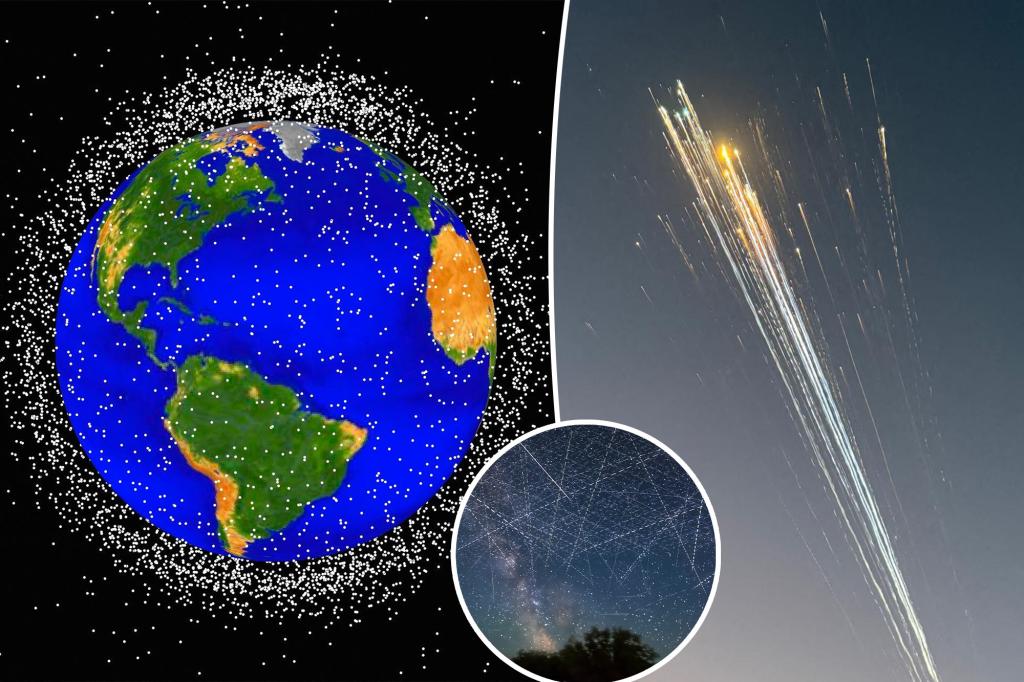The escalating risk of collisions between aircraft and descending space debris, including defunct satellites, spent rocket stages, and fragments from explosions or collisions in orbit, presents a growing concern for aviation safety and global air traffic management. This hazard, once relegated to the realm of science fiction, has transitioned into a tangible threat, demanding proactive measures to mitigate potential disasters. The increasing frequency of space launches, both governmental and commercial, contributes to the ever-expanding cloud of debris orbiting Earth, intensifying the likelihood of uncontrolled re-entries into the atmosphere. These re-entries pose a significant risk, potentially endangering populated areas and disrupting air travel.
Recent incidents underscore the immediate nature of this concern. The fiery disintegration of a SpaceX spacecraft over the North Atlantic in 2024, prompting the Federal Aviation Administration (FAA) to establish a Debris Response Area and temporarily restrict air traffic, serves as a vivid example. Similarly, the crash landing of a rocket separation ring in a Kenyan village highlights the potential for ground impact and damage. These events, although isolated, underscore the inherent unpredictability of uncontrolled re-entries and the potential for catastrophic consequences. The increasing volume of space debris coupled with the growing density of air traffic creates a volatile combination, increasing the statistical probability of a collision.
A study published in Scientific Reports quantifies this risk, estimating a 26% annual probability of uncontrolled space debris re-entry over densely populated airspaces, such as those over the Northeastern United States and Northern Europe. This statistic underscores the urgency of implementing effective mitigation strategies. The researchers emphasize the dilemma faced by national authorities: closing airspace to protect aircraft carries significant economic ramifications, while failing to do so jeopardizes safety. This complex balancing act necessitates a comprehensive approach that addresses both the immediate threat and the long-term sustainability of space operations.
The study’s authors advocate for mandatory controlled re-entries into the ocean for all future space missions. This approach, which involves carefully guiding decommissioned spacecraft or spent rocket stages towards designated oceanic areas, offers a more predictable and controlled descent, minimizing the risk to populated areas and air traffic. However, implementing such a policy faces significant challenges, including the need for international cooperation and the technological complexities of executing controlled deorbit maneuvers. Moreover, the vast amount of existing debris currently orbiting Earth presents a long-term threat that requires innovative solutions.
The sheer volume of existing space debris poses a daunting challenge. Over 2,300 rocket bodies alone are currently in orbit, destined to eventually re-enter the atmosphere in an uncontrolled manner. This looming threat, coupled with the projected growth of the space industry, underscores the long-term nature of the problem. Airspace authorities will grapple with the unpredictable nature of uncontrolled re-entries for decades to come, necessitating continuous monitoring, risk assessment, and responsive measures to ensure aviation safety. The development and implementation of advanced tracking technologies, improved debris modelling, and international protocols for debris mitigation are crucial for addressing this escalating threat.
Beyond the immediate risk to aviation, the increasing presence of space debris has broader environmental implications. Scientists have warned about the potential impact on astronomical observations due to the growing density of reflective particles in orbit, affecting ground-based telescopes’ ability to study the universe. Furthermore, the re-entry of debris into the atmosphere can introduce pollutants and potentially alter the delicate balance of atmospheric chemistry. The accumulation of metallic particles in the stratosphere, for example, has been linked to changes in aerosol concentrations, which could have unforeseen consequences for Earth’s climate system. Addressing the space debris issue requires a multi-faceted approach involving international cooperation, technological innovation, and policy changes to ensure the long-term sustainability and safety of space operations and the preservation of our planet’s environment.














